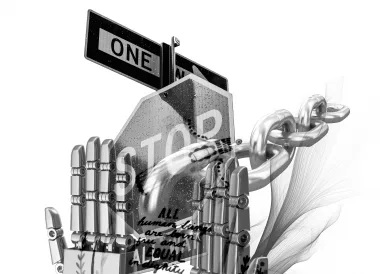Imagomundi
28 de septiembre de 2014
Indian Pharma in Latin America: A strategic investment
India has in the past decade expanded its commercial relationship with Latin America with increased exports and investments. This paper intends to show that pharmaceutical companies have a good opportunity to lead the way in stepping up this relationship by continuing to consolidate investments, create subsidiaries and joint ventures to manufacture products locally, and thus penetrate successfully into Latin America’s pharmaceutical market. The paper first explores the background and environment surrounding the entry of Indian pharma into Latin America and the factors that have allowed it to thrive in countries such as Brazil, Mexico, and Chile. It then presents us with current opportunities for investment. The case study of Caplin Point, an Indian pharmaceutical company that has grown thanks to its investment in Latin America, shows how a medium-sized company can benefit from the implementation of patient strategies in this region. Finally, the paper forecasts the region as an engine of growth in the global pharmaceutical sector.
The India-Latin America economic relationship has evolved significantly over the past decade, with new investments and value-added businesses that supplement the large trade in commodities. India’s total trade with Latin America for 2012-13 is $41 billion — but just $13.5 billion are exports, the larger chunk being imports largely comprising oil, minerals and agricultural products (Ministry of Commerce & Industry, 2013).
It is time to step up Indian investment and exports in Latin America — and the industry that is ready to lead the way is pharma.
Much has been made about the presence of Indian IT in Latin America, and the establishment of TCS’ Global Delivery Centre in Uruguay as early as 2002. But before Indian IT companies — which are present in many Latin American countries to conduct near-shoring projects — it was the pharmaceutical companies that established India’s corporate image in Latin America. More recently, Indian pharmaceutical companies have consolidated their investments, created subsidiaries and joint ventures to manufacture products locally, and have penetrated successfully into Latin America’s pharmaceutical market.
True, Indian pharmaceutical companies have been successful globally, not only in Latin America, and account for roughly 8 %—10 % of global pharma production (Sharma, 2013). In fact, the most sustained export group for India is pharmaceutical products. But although it accounts for roughly 8 % of all exports in 2012-13, it is significant because it adds strategic value to the India-Latin America relationship (Pharmexcil, personal communication, s. f.). Unlike the regular model of trade where India exports finished products and imports raw materials, here India exports raw materials that Latin America can add value to and sell within its own markets. This is a healthy bilateral arrangement that builds confidence.
Before the entry of Indian pharma in Latin America, the region paid a high price for patented drugs. This was due to a prohibition on imports of generic medicine in some countries, and the lack of expertise to create a large market for generic drugs in others. Even the biggest market in the region, Brazil, saw the entry of generic medicines into their country only in 2000 (Rich, 2000).
Only after the entry of Indian pharmaceuticals in Latin America in the late 1990s did generics become popular in the region. Not only did it bring down cost of medicine, but it put pressure on multinational companies and local pharma companies to either lower their prices or increase the proportion of generic medicines sold. Since then, medicines, vaccines and other pharmaceutical drugs have become more affordable for a large proportion of Latin America’s lower middle class. It has also helped the governments in the region reduce the cost of public healthcare.
The advancement of Indian pharma in Latin America
While the entry of Indian pharmaceutical companies to Latin America has largely been on their own initiative, the Indian government, the embassies and industry bodies like Pharmexcil helped facilitate the introduction to representatives from the region’s pharmaceutical industry in the early 2000s.
Indian pharma’s welcome into Latin America was also a calculated impulse from the Brazilian government. Jose Serra, Brazil’s Health Minister in 1997, invited pharmaceutical companies from India, China, Canada and other countries to increase and facilitate serious business investment in Brazil’s pharmaceutical sector. «We are ready to import raw materials and even generic medicines. Generic medicines account for only two per cent of our domestic market and we want to expand this share over the next few years,» said Serra in his visit to India in July, 2000 (The Hindu Business Line, 2000). Serra’s invitation was part of a larger agenda to bring down inflation, curb the government’s high public health expenditure and make healthcare more affordable for Brazilians.
Soon, other countries in Latin America followed. Mexico and Chile held seminars for Indian pharma companies, including those offering ayurvedic products, and invited them to export more. Chile’s former Ambassador to India, Jorge Heine, said in an interview in 2007 that it would be «… a win-win situation. We need affordable pharma products, while India needs to expand its market» (Sen & Subramaniam, 2007).Now, Indian pharma exports finished formulations and bulk drugs to all 20 countries in Latin America, and have production facilities in Mexico, Brazil, Argentina, as well as some countries in Central America (Pharmexcil, personal communication, s. f.). Torrent Pharma, Zydus Cadila, Dr. Reddy’s, Glenmark and many other small, medium and large Indian pharmaceutical companies have subsidiaries in Latin America. Companies like Torrent Pharma and Glenmark have met with great success in their Latin America ventures: the former gets 15 % of its earnings (ebitda) from Latin America, while the region makes up 6 % of sales for the latter (Credit Suisse, 2014). Glenmark, which has a manufacturing plant in Argentina, aims to make it a global centre for oncological products.
This has set the foundation for future investments in the region. Ajay Bharadwaj, CEO, Anthem Biosciences, said in an interview in October, 2013 that «many biopharma companies have had exposure to Latin America and many of them have already established a beach head with their products. This does make life easier for others to follow» (Vijay, 2013).
There is complementarity between India and Latin America in this sector. Asia and Latin America are poised to be the growth engines of the pharmaceutical sector globally. According to a study conducted by IMS Consulting Group on «Pharmerging markets,» Asia and Latin America have compound annual growth rates of 13 %-16 % and 11 %-14 % respectively during 2011-2015. Both regions have similar positions on global health and pharmaceutical policies. In 2009, after the Netherlands seized generic medicines produced in India and imported by Brazil, both India and Brazil made a joint statement denouncing the seizure (Press Information Bureau, 2009). They stated that such measures had a «highly negative systemic impact on legitimate trade of generic medicines, South-South commerce and national public health policies.»
Argentina remains the only country where Indian-finished formulations are not welcome. The government has excluded India from the list of countries from which imports are allowed, but Pan-American health organizations often buy and distribute some vaccines from India. The Argentine pharma industry has lobbied strongly with the health ministry to keep the competition from India out. However, the Argentine pharma manufacturers import bulk drugs from India regularly and India accounts for a sizable part of Argentine bulk drug imports.
Opportunities for investment
There are already two dozen Indian pharmaceutical companies with joint ventures or subsidiaries in Latin America – and still much scope for investment. The pharmaceutical market in Brazil, at an estimated $26 billion a year, is the region’s largest. The generics market is growing rapidly but is untapped still. Generics account for only one-fourth of pharmaceutical drugs sold in Brazil – much lower than the roughly 50 % sold in the U.S. – but sales of generic drugs in Brazil are strong, increasing by 53 % in 2012 (Latinvex, 2013).
Pharmexcil, the body responsible for promoting exports of Indian pharmaceuticals, feels that while local companies in Brazil are producing more generic drugs, India has a major role to play. «India, with its vast product mix — almost all the range of generics widely employed [in Brazil] are produced in India — and large vendor base will have an important role in the health care industry of Brazil. This may, however, become more selective in the coming years,» says Dr. P.V. Appaji, Director-general of Pharmexcil, in an email interview. That means that as the industry matures, costs rise and regulations tighten, Brazilians may choose to go with local suppliers instead of Indian or other international ones.
However, there is the rest of Latin America. Indian pharma companies have had an easier time in the generic drugs market of Mexico, where competition is less fierce than Brazil. According to a March 2013 issue of Pharmaceutical Technology, a UK-based publication, «India holds the largest portion of generic drug manufacturing in Mexico along with the export of Ayurvedic medicines.».
Seeing the success of the big boys, a concerted effort is being made by small and medium-sized Indian companies (SMEs), which constitute 40 % by value of pharmaceutical drugs produced in India, to export and invest in Latin America. The SMEs from Gujarat especially, are focused on emerging markets like Latin America. According to data compiled by the Indian Drug Manufacturers Association, emerging markets accounted for 50 %-60 % of pharma SME exports from Gujarat in 2012.
While the major Latin American markets are attractive, for these SMEs, however, exporting to semi and non-regulated markets in the region like Peru, Colombia or countries in Central America, may be easier. The regulatory systems of Brazil and Mexico, two of the biggest pharma markets in the region, are strict, and thus tougher to enter. Regulators like Brazil’s ANVISA demand a high level of compliance, similar to the guidelines followed by the U.S. FDA, now the benchmark for global pharma companies (Vijay, 2013).
Case study…
The experience of Caplin Point, a Chennai-based medium-sized pharmaceutical company which, after some tough times at home, took the decision to invest in Latin America in 2002, perhaps best highlights the opportunities available for smaller pharmaceutical companies.
Latin America has shifted Caplin’s axis from survival to growth. «Setting up operations in Latin America was a survival tactic and also a strategic move. We decided to start from ground zero in a truly challenging part of the world,» says C.C. Paarthipan, Chairman of Caplin Point, over a telephone interview (Caplin Point’s chairman, personal communication, s.f.). Paarthipan explains the challenges and the patient strategy Caplin adopted in Latin America.
First, it understood that while the costs of entry and exit can be high, it is important to have a diversified product basket if a company is planning to invest seriously in Latin America. So Caplin has a large number of product registrations — over 800. Then it coupled it with an Exclusive Importing and Distribution agreement. This reduced the risk and cost to customers.
Geographically, Caplin partnered with a number of companies and institutions in smaller, cheaper Central American countries like Guatemala and exported to the richer South American countries. Finally, it imports and distributes products through local sales points at strategic locations — a unique marketing arrangement, unlike other pharma companies. This keeps the cash coming, and has helped the company stay debt-free. It is now able to expand both in Latin America and India where it is building new facilities to produce and export high-margin products like specialty sterile injectables and pre-filled syringes. Caplin’s website shows a map with warehouses and registration completed in eight Latin American countries and plans to enter five more in the coming years.
It has taken Caplin a decade to build a network of suppliers and exporters, and register over 800 pharmaceutical products in the region. In the past decade, Caplin Point’s shares, at a low of Rs. 1 in December 2001, are now worth Rs. 145 as of 20 February, 2014.
… And the way forward
While Big Pharma in India continues to pursue the lucrative U.S. market, estimated at $359 billion, others who don’t have the ability to compete and survive in the U.S. are now looking at Latin America’s large, growing middle class and the high profit margin (Global Data, 2013). The region is one of the core engines of growth in the global pharmaceutical sector. Brazil’s pharmaceutical market alone is expected to double to $50 billion by 2017 (Almeida, 2013). The IMS Consulting Group has included five Latin American countries — Brazil, Argentina, Mexico, Colombia and Venezuela — as part of the Pharmerging markets that «remain the global growth engine» for the pharmaceutical sector. The group’s most recent report on Frontier Markets, which are categorized based on the size, positive future outlook and a friendly business environment, also includes Peru, Chile and Ecuador as possible avenues for pharmaceutical investments (Rio, 2013). Caplin Point’s Paarthipan says that he is indebted to the Latin Americans for his company’s success and that «the major driver of value creation for Caplin Point is our presence in Latin America in the last decade. The next decade will be our game changer due to the increase in product registrations in the existing markets and our expansion into various other Latin American markets. Hence we are of the opinion that the companies that don’t have plans get into this region now, will regret it a decade later».
References
Ministry of Commerce & Industry (2013). Export import data bank. Retrieved from Ministry of Commerce & Industry, Department of Commerce, Government of India website: http://commerce.nic.in/eidb/Default.asp.
Sharma, N. (2013, April 15). Exporting to CIS, African and Latam countries: Tapping the regulatory benefits.Modern Pharma. Retrieved from http://modernpharma.in/specials/pharma-export-regulations/exporting-to-cis-african-and-latam-countries-tapping-the-regulatory-benefits/3657.html.
Pharmexcil (s.f.). Personal communication.
Rich, J. (2000, November 23). Explosion of generics about to occur in Brazil. The New York Times. Retrieved from http://www.nytimes.com/2000/11/23/business/explosion-of-generics-about-to-occur-in-brazil.html.
The Hindu Business Line (2000, July 26). Free trade pact with Brazil in drugs, pharmaceuticals mooted. Retrieved from http://www.hindu.com/businessline/2000/07/27/stories/012751b3.htm.
Sen, A. & Subramaniam, G.G. (2007, July 28). Distance no bar for trade. The Economic Times. Retrieved from http://articles.economictimes.indiatimes.com/2007-07-28/news/27677797_1_india-chile-india-and-chile-jorge-heine.
Pharmexcil (s.f.). Personal communication.
Engineering goods, pharma and auto companies to be affected in emerging markets uncertainty: Credit Suisse (2014, January 30). Moneylife. Retrieved from http://www.moneylife.in/article/turkey-and-argentina-currency-crises-likely-to-affect-indian-companies/36175.html.
Vijay, N. (2013, October 16). South America an important market for Indian bio-pharma in future. Pharmabiz. Retrieved from http://www.pharmabiz.com/ArticleDetails.aspx?aid=78201&sid=11.
Press Information Bureau (2009). Kamal Nath and Celso Amorim discusses ways for reactivating multilateral trade negotiations of Doha Round (Release ID :47118). Government of India. Retrieved from Press Information Bureau website: http://www.pib.nic.in/newsite/erelease.aspx?relid=47118.
Latinvex (2013, March 11). Brazil: Generic drugs war. Retrieved from http://latinvex.com/app/article.aspx?id=581.
Vijay, N. (2013, October 16). South America an important market for Indian bio-pharma in future. Pharmabiz. Retrieved from http://www.pharmabiz.com/ArticleDetails.aspx?aid=78201&sid=11.
Caplin Point (s.f.). CC Paarthipan. Personal communication.
Global Data (2013). Countryfocus: Healthcare, regulatory and reimbursement landscape – US (GlobalData27669). Retrieved from website: http://www.reportsnreports.com/reports/248941-countryfocus-healthcare-regulatory-and-reimbursement-landscape-us.html.
Almeida, B. (2013, November 18). The hottest products among Latin American consumers in 2013. Latin Link. Retrieved from http://latinlink.usmediaconsulting.com/2013/11/the-hottest-products-among-latin-american-consumers-in-2013/.
Rio, F. D. (2013). Frontier markets: where to play to capture next wave of growth. IMS Consulting Group. Retrieved from ims consulting group website: http://www.imsconsultinggroup.com/deployedfiles/consulting/Global/Content/Our Latest Thinking/Static Files/frontier_markets.pdf.
Hari Seshasayee
Senior Researcher, Gateway House: Indian Council on Global Relations
seshasayee.hari@gatewayhouse.in
Revista Zero Impresa Edición 32
Primer semestre de 2014
ISSN electrónico: 2344-8431
ISSN impreso: 2344-8431
Artículos Recientes
Entrevista con Germán Rodríguez: egresado FIGRI, presidente del Banco Pichincha en Colombia
¡De escribir en la Revista a Zero a ser recientemente escogido por el diario [...]
Presentación: ¿realmente hay que temerle a la inteligencia artificial?
Situemos los miedos en donde corresponde: en la estupidez humana y no en la [...]
Sobre el captcha “No soy un robot”. Una reflexión sobre la condición humana, el valor social y el patrimonio cultural
Cualquier persona con acceso a internet ha tenido, por lo menos una vez, que [...]
Protección de los derechos humanos de cara a los riesgos que representa la Inteligencia Artificial en los ámbitos nacional e internacional
La protección de los derechos humanos en proyectos de regulación de la IA es [...]






